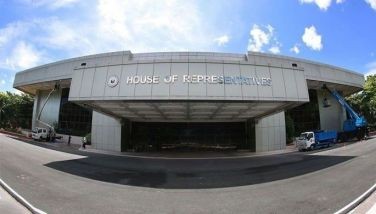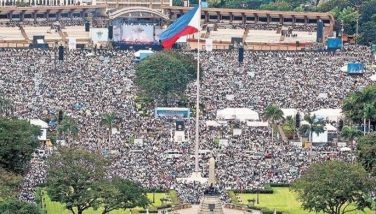Clear and present danger

It’s been nearly two weeks and President Aquino is still fuming over the travel advisories on the Philippines issued by six countries.
Showing that he does what he says, he brought his beef all the way to Yokohama, openly expressing doubts about the “sincerity” of the country’s allies as New Zealand Prime Minister John Key, seated beside him, visibly turned red, according to reports.
It turned out that the President’s irritation wasn’t too misplaced. He and Key had attended a gathering of CEOs on the sidelines of the annual summit of the Asia-Pacific Economic Cooperation (APEC) forum, and most of the questions were directed at P-Noy. And among the issues raised by the CEOs was their safety in the Philippines in the light of the travel advisories.
So people read those advisories after all. Coming on the heels of fresh global terror plots, notably using parcel bombs, I guess security concerns are again in sharp focus. But with such concerns being raised just days before the first gathering of potential participants in the PPP or public-private partnership program, P-Noy smelled sabotage. He lambasted APEC allies, never mind that (or perhaps because) beside him sat the leader of one of the six countries that issued the advisories.
This time it’s the President himself rather than his immature aides who risks being described by critics as juvenile. But his outburst might have made him attain his objective. US President Barack Obama reportedly promised to look into the matter. Canada’s Prime Minister Stephen Harper “noted” his complaint and agreed to review their advisory. Australia, which issued the strongest travel warning, and the United States (P-Noy’s main suspect as the source of the intel that gave rise to the terror alerts) have reportedly agreed to work out a protocol on the issuance of such advisories.
The President himself could use a clear protocol on the processing of raw intel and flow of information from security agencies all the way up to the commander-in-chief.
* * *
Diplomatic sources have said the intelligence report on a heightened terror threat was in fact shared by the foreign governments with the Philippine National Police (confirmed by the PNP), the Department of National Defense (denied by Defense Secretary Voltaire Gazmin, although the PNP said the intel was shared with the Armed Forces) and the National Intelligence Coordinating Agency before the travel advisories were issued.
All six embassies concerned have explained to the Department of Foreign Affairs that it is their duty to issue appropriate travel advisories to their citizens. Such advisories are constantly updated and revised.
But P-Noy apparently felt something was amiss when the six countries revised their advisories within days of each other, based on intel that the PNP said was raw. He felt that the Philippines had been unfairly singled out over other countries. In private, the President has lamented that this is all about the US trying to influence the review of the Visiting Forces Agreement.
Until late last week the PNP was saying that the intel could not be verified. If a terrorist attack proves the intel to be accurate, expect meteorologist Prisco Nilo to have company in his retirement.
P-Noy, a known gun enthusiast with a keen interest in security matters, should give precise instructions to security officers on what he expects from them in terms of intelligence reports, which are classified according to degrees of reliability.
Does he want to be informed even of raw intel, or does he want only verified information from A-1 sources? Is there a system of sharing such reports with the Department of Foreign Affairs, so that it doesn’t get blind-sided by travel advisories issued by other countries?
* * *
On the sidelines of APEC, the travel warnings were not a concern of at least one participant. Donald Tsang finally met P-Noy, and Hong Kong’s chief executive wasn’t ecstatic over the President’s review of the investigation of the Aug. 23 hostage fiasco in Rizal Park.
Hong Kong has not lifted its ban on travel to the Philippines. P-Noy has matters other than terror warnings to worry about if he wants to lure visitors and investors to the country. So far, the country still has little to show by way of laying the groundwork for institutional reforms that could prevent a repeat of the hostage fiasco.
The threat of criminality is ever present – a problem that was raised in Japan’s recent update of its travel advisory. Japanese Ambassador Makoto Katsura, apparently learning from the experience of the six other embassies, carefully explained the nature of his government’s warning, which mentions the risk of robbery and kidnapping.
Ambassador Katsura emphasized that he personally felt safe in Manila. That’s a marked departure from the statement of one of his predecessors, Kojiro Takano, who told foreign correspondents in 2003 that he feared for his safety and spent sleepless nights in Manila. The ambassador never retracted his statement so it must have received a green light from the Tokyo head office.
Crime is a problem around the world, but we have to admit that the problem is worse in certain countries including ours. The hostage crisis merely highlighted the problem.
Criminality poses a clear and present danger to everyone in this country. The Koreans have sought the help of the PNP in stopping hijackings along C-5, wherein the victims – foreigners and locals alike – are picked out upon their arrival at the NAIA.
Unlike terror threats, this problem is more tangible and easier to deal with. Simple police visibility can go a long way in preventing crimes, including the theft of streetlights, along C-5. CCTV can be installed, at high spots where they are harder to reach. If there are regular police patrols, the cameras can’t be stolen. Checkpoints can be set up at random along the road especially in the late hours when light traffic makes it easier for criminals to strike.
We need to do more about carjacking, which cannot flourish without the connivance of Land Transportation Office personnel who issue new documents and license plates for hot cars, plus garage operators who alter the vehicles.
Kidnapping is back, and the problem could get worse if lawmen fail to contain it soon. The recent kidnapping of six schoolchildren in Metro Manila should lead to a red alert on this problem.
If law enforcers do not act decisively, more governments are likely to update their travel advisories on the Philippines soon. And the basis will be an undeniable crime problem rather than an unverified terror threat.
- Latest
- Trending




























